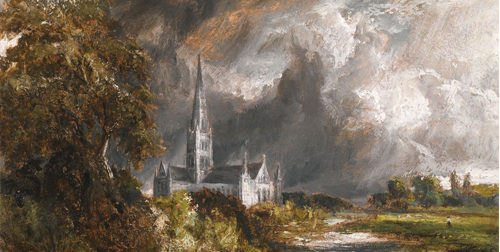Courses
Romantic Landscapes of Constable and Turner: Common Goals, Contrasting Outcomes
 The paintings of the great nineteenth-century English artists John Constable and Joseph Turner share common subject matter but differ greatly in terms of style and intent. Constable’s paintings express a rustic naturalism. He declared he painted his “own places best,” emphasizing a personal connection with the countryside of his native East Anglia. In contrast, Turner’s landscapes were informed by his travels through Europe and especially through England. His goal was to paint works of historical significance emulating “great masters” but using landscapes as subject matter. Differences and competition informed the professional relationship between Constable and Turner. Yet they both shared passionately one goal: to elevate the stature of landscape painting within the hierarchy of genres in the art world. We will examine works of both artists, comparing and contrasting their approaches. We will also address how their art reflected underlying economic and political changes in early nineteenth-century England and to what extent their landscapes served as an imaginative refuge from the social struggles of contemporary life at that time.
The paintings of the great nineteenth-century English artists John Constable and Joseph Turner share common subject matter but differ greatly in terms of style and intent. Constable’s paintings express a rustic naturalism. He declared he painted his “own places best,” emphasizing a personal connection with the countryside of his native East Anglia. In contrast, Turner’s landscapes were informed by his travels through Europe and especially through England. His goal was to paint works of historical significance emulating “great masters” but using landscapes as subject matter. Differences and competition informed the professional relationship between Constable and Turner. Yet they both shared passionately one goal: to elevate the stature of landscape painting within the hierarchy of genres in the art world. We will examine works of both artists, comparing and contrasting their approaches. We will also address how their art reflected underlying economic and political changes in early nineteenth-century England and to what extent their landscapes served as an imaginative refuge from the social struggles of contemporary life at that time.Instructor: Rhea Higgins
***Please note*** There is a change in the schedule for this course from what was printed in the brochure.
Four Thursdays: March 1, 8, 15, 22
4:30-6P.M.
$100
Wasch Center, Butterfield Room

RHEA HIGGINS is an adjunct professor in the Art History Department in the College of Arts and Sciences at the University of Hartford. She taught at Wesleyan in Graduate Liberal Studies from 1986 to 2002. Her area of expertise is nineteenth-century European painting, with an emphasis on post-Impressionist artists.
